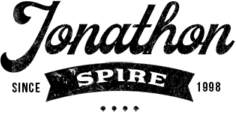In a world where data breaches and financial scandals can quickly erode trust, companies must take a proactive approach in safeguarding their data and maintaining the integrity of their financial reporting.
This is where the Sarbanes-Oxley Act, commonly referred to as SOX, enters the scene. But how exactly does SOX compliance fit into a business’s security infrastructure? Let’s navigate through this intricate maze.
The Genesis Of The Sarbanes-Oxley Act
To fully grasp the essence of SOX compliance, it’s crucial to understand its origin.
The Sarbanes-Oxley Act was enacted in 2002, in the wake of notorious corporate financial scandals involving companies like Enron and WorldCom.
Its primary goal was to rebuild public trust by ensuring that public companies maintain transparent, accurate, and reliable financial reporting.
SOX And Its Implications For Business Security
While the SOX Act encompasses a wide array of stipulations, its relevance to a company’s security infrastructure mainly lies in Section 404.

This section mandates companies to annually assess and report the effectiveness of their internal controls over financial reporting.
In simple terms, it’s not just about financial accuracy but also about the security measures safeguarding that data.
Failure to ensure robust controls can lead to unauthorized data access, tampering, and ultimately, inaccurate financial reporting. Hence, SOX compliance compels businesses to strengthen their security infrastructure.
Key Security Measures Under SOX
The security measures influenced by SOX can be wide-ranging. Here’s a brief data table summarizing some key security elements impacted by SOX compliance:
| Security Measure | Relevance to SOX |
| User Access Controls | Ensures only authorized individuals access financial data. |
| Data Encryption | Protects sensitive financial data during storage and transmission. |
| Audit Trails | Allows tracking of who did what and when with financial data. |
| Regular Security Audits | Assesses the effectiveness of the controls in place. |
By ensuring that these security measures (among others) are rigorously implemented and regularly updated, companies not only comply with SOX but also fortify their overall security infrastructure.
Navigating The SOX Compliance Landscape
Complying with SOX is not a one-time affair. With the dynamic nature of business environments and the evolving threat landscape, companies need to continually assess and refine their security controls.
This involves regular training of personnel, periodic risk assessments, and adopting cutting-edge security technologies.
Moreover, SOX compliance isn’t just the responsibility of the finance or IT department. It requires cross-departmental collaboration.
From the C-suite to the operational level, every tier of the organization plays a role in ensuring that financial data remains sacrosanct.
The Bigger Picture: Beyond Compliance
While the immediate goal for many businesses might be SOX compliance to avoid penalties or legal repercussions, it’s essential to view it in a broader context.
A robust security infrastructure, as mandated by SOX, not only safeguards a company’s financial integrity but also boosts stakeholder trust.
In an age where reputation can be a significant differentiator, seeing SOX compliance as an opportunity rather than an obligation can set a business apart.
The Ripple Effect On Vendor And Partner Relationships
Another dimension of SOX compliance that organizations should consider is its impact on external relationships, particularly with vendors and partners.

As businesses bolster their internal security and compliance protocols, it’s only natural to expect and demand the same level of commitment from third parties who have access to their financial systems or data.
Collaborations should be underpinned by a mutual respect for stringent security protocols. Companies might find it beneficial to conduct joint security audits or training sessions with key partners.
Furthermore, incorporating SOX-related clauses in contracts can safeguard the business and maintain the sanctity of financial data.
This ripple effect not only amplifies security across the ecosystem but also solidifies trust, ensuring that all entities in the chain are working cohesively towards a shared goal of comprehensive data protection and transparency.
The Evolving Landscape Of Digital Transformation and SOX
As businesses continue to embrace the wave of digital transformation, the intersection of SOX compliance and emerging technologies becomes all the more relevant.
Advancements like cloud computing, AI-driven analytics, and blockchain are revolutionizing how companies operate.
However, with these technologies comes a new set of challenges for maintaining SOX compliance.
For instance, cloud-based systems may decentralize data, requiring a renewed approach to internal controls.
AI, while optimizing processes, introduces algorithmic risks that must be understood and managed.
Blockchain, with its promise of immutable ledgers, poses questions about data integrity and verification.
For businesses, staying ahead of these technological curves while ensuring adherence to SOX mandates will require continuous learning, adaptive internal controls, and perhaps most importantly, a culture that prioritizes both innovation and compliance in equal measure.
Merging Compliance And Security
SOX compliance offers a structured framework that, when integrated with a company’s security infrastructure, provides a holistic shield against both internal and external threats.
By understanding where SOX fits into the security puzzle, businesses can better navigate the complexities of the modern corporate landscape, ensuring transparency, trustworthiness, and enduring success.
Ella Marcotte
Latest posts by Ella Marcotte (see all)
- UA vs GA4: The 4 Big Differences You Need To Know - April 26, 2024
- Understanding The Role Of Control Valves In Industrial Automation - April 8, 2024
- How Automation Can Boost Your Business Outcomes - April 4, 2024




